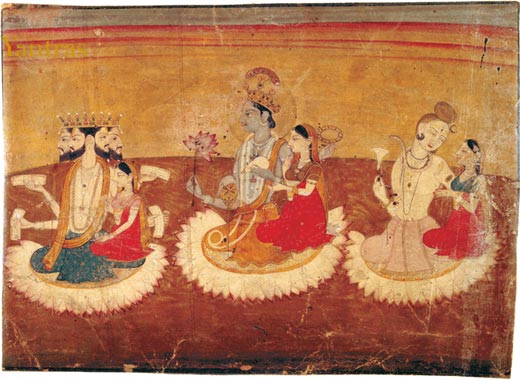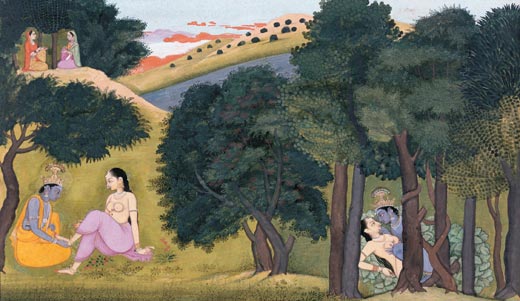|
 |
 |
 |
The goal of this religion is to overcome ego, triumph over the illusion of duality and realise the essential oneness of all things. With this realisation, a Hindu escapes the cycles of rebirth and attains spiritual liberation. |
 |
 |
 |
 |
 |
Hinduism is the principal religion of the Indian subcontinent and is practised by nearly eighty percent of its population. In addition, more than thirty million followers live outside India, in regions as distant as the Caribbean, North America, South Africa, United Kingdom, throughout Asia, particularly Nepal and Sri Lanka, as well as in Australia.
Hinduism is among the oldest religions of the world and, having evolved over tens of thousands of years, is a complex tradition that defies easy definition. Unlike many other major religions, Hinduism does not owe its formulation to a particular individual or founder. Instead, many followers of the tradition maintain that the doctrines were divinely revealed and therefore the religion’s origins lie beyond human history.
|
|
Rather than a single authoritative scripture like the Christian Bible or the Islamic Koran, Hinduism acknowledges a number of sacred texts. Similarly, rather than one creator God who has the ability to affect our day-to-day existence, followers of Hinduism, or Hindus, worship the gods Shiva and Vishnu, as well as the all-powerful Goddess, who takes on many forms. The tradition also recognises numerous additional gods, who may not be omnipotent, yet perform a variety of divine functions to ensure cosmic order and continuance of life. It is often said that there are more than thirty-three million Hindu gods protectively watching over us.
|
|
 |
 |
 |
 |
So what does a Hindu believe?
The religion centres on three primary tenets: 1) samsara 2) karma and 3) moksha.
Samsara is the belief that an individual is subject to innumerable transmigrations or cycles of rebirth. Karma is a system of justice: one’s actions during a given lifetime determine the condition of the next. That is to say, good actions during one life lead to a favourable rebirth, whereas selfish, inconsiderate deeds, lead to an unfavourable reincarnation. Moksha, or liberation, is the final goal of Hinduism.
According to Hindu thought, all matter is inherently identical for everything emerges from a common source, known in Sanskrit as Brahman. An individual’s mind, engulfed in egoistic thinking, overlooks the underlying oneness of all phenomena and instead perceives and categorises the world in dualistic terms, like male and female, you and me, black and white, this and that.
|
|
The goal of the religion is to overcome ego, triumph over the illusion of duality and realise the essential oneness of all things. With this realisation, a Hindu escapes the cycles of rebirth and attains spiritual liberation.
Hindu Gods like Shiva, Vishnu and the Goddess are various forms through which the idea of Brahman is conveyed. When a Hindu worships these deities, he or she not only seeks worldly protection and favours, but also attempts to understand the relationship between the individual and the divine - that one is inherently not separate from the other. Thus, according to Hindu thought, within every individual resides the power of the divine, waiting to be realised. |
|
 |
Top: Brahma and Sarasvati, Vishnu and Lakshmi, and Shiva and Parvati seated on lotus thrones, India, Punjab Hills, Kangra school, c1780 The British Museum, gift of P. C. Manuk and Miss G. M. Cole
Above: The intercourse and the final adornment folio from a Gita Govinda series India, Punjab Hills, Kangra, ascribed to a Master of the First Generation after Nainsukh, c1780. The Walters Art Museum, Baltimore, Maryland. Gift of the John and Berthe Ford |
|
 |
 |
|
